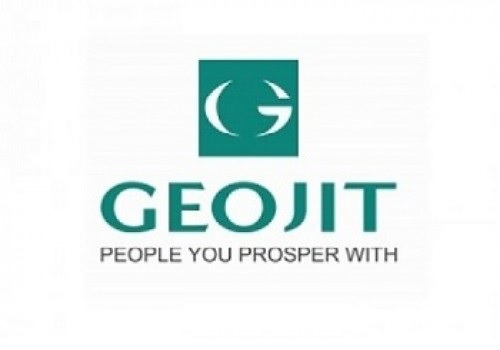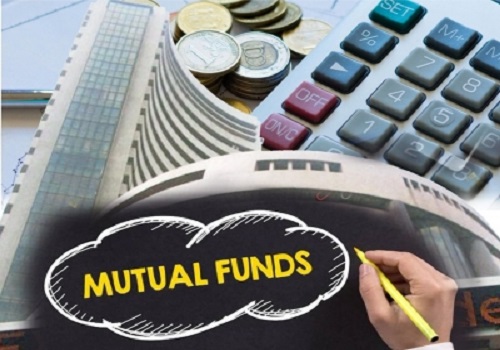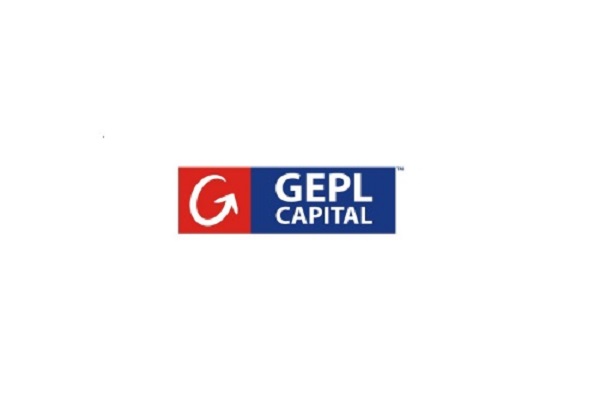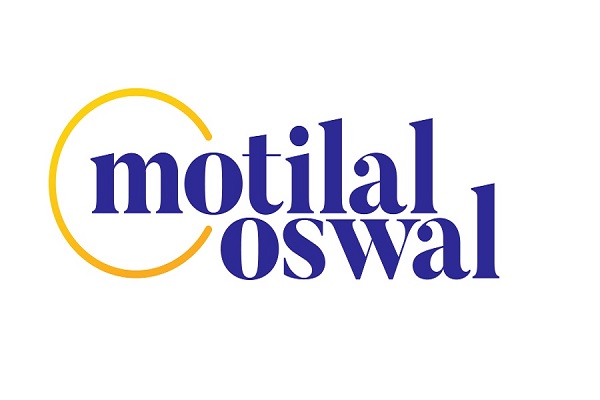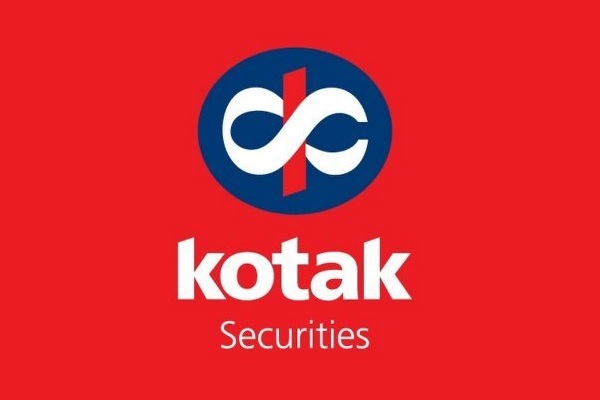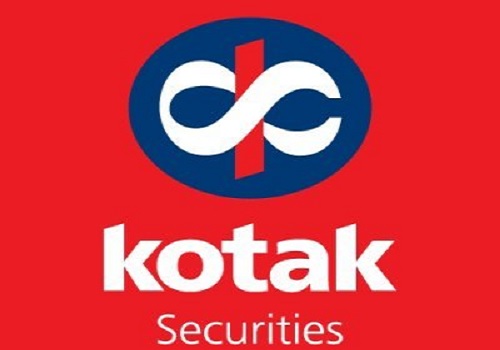Natural Gas trading range for the day is 386.2-433.4 - Kedia Advisory

Gold
Gold prices posted a strong rebound, settling 1.19% higher at 124191, supported by renewed expectations of near-term US rate cuts after fresh comments from Federal Reserve officials. New York Fed President John Williams signaled room for easing, helping gold recover, even as policymakers continued to highlight sticky inflation and a resilient labour market. Chicago Fed President Austan Goolsbee reiterated discomfort with front-loading rate cuts, citing stalled progress toward the 2% inflation target. Meanwhile, the September NFP rose by 119,000, sharply above forecasts, although the large downward revision for August and a rise in the unemployment rate to 4.4%, the highest since 2021, added mixed signals to the macro backdrop. Physical demand across Asia remained subdued, with Indian dealers offering discounts of up to $21/oz, down from last week’s five-month high. Chinese demand was similarly weak, with bullion trading at par to a $5 discount amid elevated global prices. Swiss gold exports for October declined 11% month-on-month, reflecting reduced Chinese buying. On the demand front, global gold demand rose 3% YoY to 1,313 tons in Q3, the highest on record, driven by strong investment demand. Bar and coin purchases jumped 17%, while physically backed ETFs saw a 134% surge. Central bank buying also increased 10%, maintaining strength above pre-2022 levels. Technically, gold is witnessing short covering with open interest down 10.84%. Support is placed at 122310, with a break opening 120430, while resistance stands at 125305, above which 126420 may be tested.
Trading Ideas:
* Gold trading range for the day is 120430-126420.
* Gold rebounds as fresh Fed signals revive December easing bets
* Fed’s Williams said he still sees room for a near-term cut, helping the metal recover.
* Fed's Goolsbee repeats he is uneasy on rate cuts
Silver
Silver prices ended flat at 154151, reflecting a cautious market tone as investors positioned themselves ahead of December’s FOMC meeting. Expectations that the US Federal Reserve will refrain from cutting rates in December remained firm after policymakers highlighted persistent inflation risks and economic uncertainties. The delayed US NFP report added mixed signals, with employment growth improving in September while the unemployment rate climbed to 4.4%, the highest in four years. Fed Governor Michael Barr’s comments on proceeding carefully with future rate cuts also contributed to the cautious sentiment. For the week, silver remains on track to post a decline of over 1%. Physical factors, however, offered support. India’s wedding season lifted demand, while uncertainty over potential US tariffs on silver added to the metal’s safe-haven appeal. London vault silver holdings rose 6.8% in October to 26,255 tons, easing the liquidity crunch after inflows from the US and China. Comex inventories, despite recent outflows of 1,568 tons, remain higher year-on-year due to tariff-related uncertainties. ETP holdings surged 18% through November 6, reflecting rising investor concern about stagflation, geopolitical tensions, and fiscal sustainability. Technically, silver is witnessing long liquidation, with open interest down 14.19%. Support lies at 151275, below which 148395 may be tested. Resistance is at 156110, and a breakout may take prices toward 158065.
Trading Ideas:
* Silver trading range for the day is 148395-158065.
* Silver slipped amid expectations that the US Federal Reserve will refrain from cutting interest rates in December.
* The delayed US nonfarm payrolls report showed mixed signals, with employment growth accelerating in September.
* Fed Governor Michael Barr cautioned that the central bank must proceed carefully on further rate cuts.
Crude oil
Crude oil prices retreated, settling 1.25% lower at 5197, pressured by renewed diplomatic efforts between the United States and Ukraine that raised hopes of a peace framework, potentially unlocking additional global supply. Comments from Ukrainian President Volodymyr Zelenskiy about working with Washington on an end-war plan further weighed on sentiment. Expectations of prolonged monetary policy uncertainty also curbed risk appetite. Adding to the bearish tone, Goldman Sachs projected that oil prices are likely to trend lower through 2026 amid a strong supply wave, though it noted that Brent could rebound above $70 in 2026–27 if Russian output declines more sharply. On the supply front, OPEC+ kept its December output increase unchanged at 137,000 bpd, with a pause planned for Q1 next year. US inventory data showed a mixed picture: crude stocks rose 6.4 million barrels in the week to November 7, while a later report indicated a sharp 3.426-million-barrel decline for the week ending November 14. Cushing hub stocks fell modestly, while gasoline inventories increased 2.327 million barrels and distillates rose slightly. The EIA raised its US production forecast, expecting output to average a record 13.59 million bpd this year before easing marginally next year. Globally, supply is projected at 106 million bpd, exceeding consumption of 104.1 million bpd. Technically, crude oil is under fresh selling pressure, with open interest up 6.85%. Support lies at 5139, below which 5082 may be tested, while resistance is at 5260, with a breakout opening 5324.
Trading Ideas:
* Crudeoil trading range for the day is 5082-5324.
* Crude oil dropped as the United States pushed for a Russia-Ukraine peace deal that could swell global supply.
* Ukrainian President Volodymyr Zelenskiy said he would work with Washington on a plan to end the war.
* EIA reported a larger-than-expected rise in U.S. crude stocks last week
Natural gas
Natural gas prices climbed 3.85% to 415, supported by a shift toward colder weather forecasts heading into early December. After several sessions of warmer revisions, the latest European weather model added notable heating demand for late November and early December, sparking fresh buying interest. Weather remains the dominant winter driver, with some long-range outlooks still hinting at a colder-than-normal season. NatGasWeather highlighted that models had previously shed early-December demand, but the midday update partially reversed those losses. Additional support comes from expectations of the season’s first storage withdrawal following last week’s cold snap. On the supply side, US production remains elevated. Lower-48 output is averaging 109.2 bcfd in November, near record highs and above October levels, keeping inventories roughly 4% above normal. LNG feedgas demand is robust as well, averaging 18 bcfd so far this month compared with a record 16.7 bcfd in October. The EIA reported a 14 bcf storage withdrawal for the week ended November 14, in line with expectations and contrasting with a build during the same week last year. Looking ahead, the EIA projects both US natural gas output and demand to rise to record highs in 2025. Dry gas production is forecast to reach 107.1 bcfd next year, while consumption is expected at 91.6 bcfd. Technically, the market is under short covering, with open interest plunging 44.65%. Support lies at 400.6, below which 386.2 may be tested. Resistance stands at 424.2, and a break above could take prices toward 433.4.
Trading Ideas:
* Naturalgas trading range for the day is 386.2-433.4.
* Natural gas climbed as some forecasts shifted colder heading into early December.
* After several days of warmer revisions, the latest European model added heating demand for late November and early December, helping spark buying.
* Support also comes from expectations of the first storage withdrawal of the season after last week’s cold snap.
Copper
Copper prices edged higher, settling 0.63% up at 1003.05, supported by bullish long-term outlooks after Chile’s state copper commission Cochilco raised its price forecasts for 2025 and 2026 to record levels. The revisions reflect persistent supply constraints in the world’s largest copper-producing nation. However, broader gains were capped as markets remained cautious amid uncertainty over whether the US Federal Reserve will cut rates in December. China’s copper dynamics offered mixed signals. Imports of copper cathodes in October fell sharply by 22.10% YoY and 15.65% MoM, reflecting softer buying interest, although refined copper output still grew 8.9% YoY despite a 4.9% MoM decline. LME inventories rose by 4,450 tons to 104,500 tons, the highest since early October, while the cash-to-three-month spread showed a $36.50/ton discount, indicating ample near-term supply. Global supply concerns persisted due to ongoing disruptions, though Freeport-McMoRan confirmed production at Indonesia’s Grasberg mine remains on track for resumption by July 2026. Goldman Sachs raised its December 2025 price forecast to $10,610/ton, maintaining its $10,000–$11,000 range for 2026–27, and projecting a longer-term rise to $15,000/ton by 2035 due to structural deficits and delayed mine developments. The International Copper Study Group (ICSG) expects a 178,000-ton surplus in 2025 followed by a 150,000-ton deficit in 2026. Technically, copper is under short covering with open interest down 28.4%. Support lies at 995.8, below which 988.4 may be tested. Resistance is at 1007.1, and a breakout could target 1011.
Trading Ideas:
* Copper trading range for the day is 988.4-1011.
* Copper rose as Chile's state copper commission Cochilco lifted its price outlook to record.
* Goldman Sachs raised its December 2025 copper price forecast to $10,610 per ton from $10,385, reflecting a fourth-quarter rally.
* China, imported 279,944 tons of copper cathodes in October, down 22.10% year-on-year and 15.65% on a monthly basis.
Zinc
Zinc edged higher, settling 0.46% up at 306.25, supported by persistently tight LME inventories and a mild recovery in physical premiums. The global zinc market surplus narrowed notably to 20,300 tons in September, down from 32,700 tons in August, according to ILZSG data. For the first nine months of 2025, the refined zinc market recorded a 120,000-ton surplus, slightly larger than the 107,000-ton surplus seen during the same period in 2024. Despite supply tightness, weak economic indicators from China kept demand concerns in focus, while fading expectations of a near-term Federal Reserve rate cut added to caution. LME inventories remain critically low at 35,875 tons, near the lowest levels since February 2023, while SHFE zinc stocks fell 0.54%. Globally, zinc inventories outside China have plunged to extremely tight levels. China’s refined zinc exports surged to 8,519 tons in October, up 243.8% from September, driven by smelters targeting overseas markets amid a severe LME squeeze and weak domestic demand. Although LME stocks later recovered to 45,075 tons, they remain historically low. Earlier tightness had pushed spot premiums above $300/ton, now easing to around $100/ton. Production patterns remain mixed: September refined zinc output fell 4% MoM but rose 20% YoY, while cumulative January–October production is estimated to grow 10% YoY, supported by capacity resumptions across multiple provinces. Technically, zinc is in short covering mode, with open interest falling 16.81%. Support lies at 303.3, with deeper weakness toward 300.2. Resistance is at 308.2, and a breakout may lift prices toward 310.
Trading Ideas:
* Zinc trading range for the day is 300.2-310.
* Zinc gains supported by persistently tight LME inventories and a mild rebound in physical premiums.
* The global zinc market surplus declined to 20,300 metric tons in September from 32,700 tons in August.
* Zinc inventories in warehouses monitored by the Shanghai Futures Exchange fell 0.54% from last Friday.
Aluminium
Aluminium prices edged higher, settling 0.40% up at 266.15, supported by persistent concerns that Chinese smelters are nearing government-imposed capacity limits, restricting further supply growth. Expectations of improved demand and constrained output in China added strength, though gains were capped by a firm dollar and lingering uncertainty around China’s macro outlook. Global primary aluminium output in October rose 0.6% YoY to 6.294 million tonnes, IAI data showed. At the same time, Japan’s aluminium stocks at three major ports declined 3.6% MoM to 329,100 tonnes, reflecting steady consumption. Primary aluminium output reached 3.8 million tonnes in October (+0.4% YoY) but fell 9% from September, indicating slowing production momentum. Supply concerns remained elevated as China reiterated its focus on preventing overcapacity to curb deflationary pressure. SHFE aluminium inventories rose 7.67% from last Friday, but global supply risk persisted amid refinery disruptions. Century Aluminium suspended two-thirds of production at its Iceland smelter due to electrical faults, while one potline at Iceland’s Grundartangi smelter was also shutdown. On the demand front, China's unwrought aluminium exports rose to 542,000 tonnes in July, while imports climbed 10.4% YoY in October to 350,000 tonnes, driven by resilient consumption in transportation, construction, and packaging. Technically, aluminium is in short-covering mode with open interest down 15.38%. Support lies at 263.5, with deeper downside toward 260.8. Resistance is placed at 267.7, where a breakout may lift prices toward 269.2.
Trading Ideas:
* Aluminium trading range for the day is 260.8-269.2.
* Aluminium gains supported by concerns that Chinese smelters are nearing government-imposed capacity limits, constraining supply.
* Aluminium inventories in warehouses monitored by the Shanghai Futures Exchange rose 7.67% from last Friday.
* Aluminium stocks at three major Japanese ports fell to 329,100 metric tons by the end of October, a decrease of 3.6% from the previous month.
Turmeric
Turmeric prices declined sharply, settling 2.88% lower at 13,970, pressured by increasing acreage supported by favourable rains during the current sowing season. Stocks with farmers in Warangal are nearly exhausted, with no fresh arrivals in the past two days, yet the downside remains limited as heavy rains have impacted yields in Maharashtra, Andhra Pradesh, and Karnataka. Erode is witnessing larger inflows from these states, but persistent rainfall has triggered disease outbreaks and storage challenges due to excessive humidity. Additionally, significant crop damage has been reported in Nanded, where recent heavy rains affected nearly 15% of turmeric-growing areas, adding a supportive tone to prices. Market participants continue to track changing weather patterns and crop conditions closely. Dry weather in some regions is aiding timely new-season planting, and early estimates suggest a 15–20% rise in turmeric acreage as farmers shift from less profitable crops. At Duggirala market, fresh arrivals are attracting strong buyer interest. New crop is commanding a premium due to its superior quality, with daily trading volumes of 1,000–1,200 bags, and 50–55% of new stock already traded. Turmeric exports also showed improvement, rising 3.31% during April–August 2025 to 80,156 tonnes, with August exports up 7.27% YoY and 13.71% MoM. Technically, turmeric is witnessing fresh selling, with open interest rising 1.56% to 10,400. Support lies at 13,670, with further downside toward 13,370. Resistance is placed at 14,420, and a breakout may lift prices toward 14,870.
Trading Ideas:
* Turmeric trading range for the day is 13370-14870.
* Turmeric dropped amid increase in acreage due to favourable rains during the current sowing season.
* Turmeric stocks held by farmers in Warangal are nearly depleted, with no fresh arrivals over the past two days.
* However downside seen limited as yields in Maharashtra, Andhra Pradesh and Karnataka have been affected due to rains.
* In Nizamabad, a major spot market, the price ended at 14678.5 Rupees dropped by -0.38 percent.
Jeera
Jeera prices edged higher, settling 1.24% up at 21,710, supported by adverse weather and delayed sowing across major growing regions. Uneven rainfall has slowed field preparation, with Gujarat experiencing one of its slowest sowing seasons in years. Arrivals at Unjha remain extremely low, and premium-quality cumin continues to command higher rates. Supply remains tight as both India and the Middle East face logistical challenges, although upside potential is capped due to adequate domestic stocks and muted export demand. Export buying from Gulf nations and China has improved slightly but remains highly price-sensitive. The conclusion of the retail season and subdued overseas demand have kept traders cautious. A positive factor has been the GST Council’s decision to reduce GST to 5%, which is expected to benefit FMCG-linked demand and enhance export competitiveness. Farmers currently hold nearly 20 lakh bags, but only 3–4 lakh bags are likely to be traded before season-end, leaving a sizable carry-forward stock of about 16 lakh bags. Production for the current season is estimated at 90–92 lakh bags, lower than last year’s 1.10 crore bags due to reduced acreage. In Gujarat, output is projected at 42–45 lakh bags, and in Rajasthan 48–50 lakh bags. Jeera exports during Apr–Aug 2025 declined 17.02% to 85,977 tonnes, though August exports rose 3.24% YoY. Technically, fresh buying is visible with open interest up 1.3%. Support lies at 21,480, with deeper downside toward 21,230. Resistance is placed at 21,910, and a breakout could lift prices toward 22,090.
Trading Ideas:
* Jeera trading range for the day is 21230-22090.
* Jeera gains as weather issues and delayed sowing are keeping cumin prices strong.
* However upside seen limited due to comfortable supplies and tepid export interest amid adequate existing stocks.
* Farmers are struggling to start sowing due to uneven rainfall.
* In Unjha, a major spot market, the price ended at 21088.8 Rupees dropped by -0.45 percent.
Views express by all participants are for information & academic purpose only. Kindly read disclaimer before referring below views
